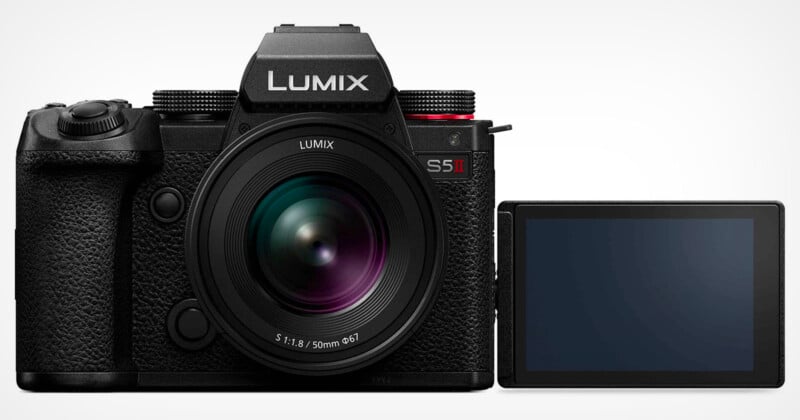
Nearly half of the people who have bought the Panasonic Lumix S5 II and S5 IIX are in their 20s and 30s, much younger than Panasonic expected ahead of the cameras launching early this year.
In an interview published by Phile Web and shared by Digicame-Info, Toshiyuki Tsumura, vice president of Panasonic’s Imaging Business Unit, explains that Panasonic is surprised by the demographics purchasing the S5 II and S5 IIX cameras.
“We strongly feel that new customers, mainly young people, are coming in, as double lens kits account for an overwhelming proportion of the product, to the point where they were temporarily in short supply,” Tsumura explains in a machine-translated version of the interview.
“We assume that Generation Z will become the main purchasing group in the future, and are analyzing how their needs will expand. It’s already commonplace to take pictures with a smartphone, edit and process them, and enjoy self-expression through things like Vlogs, and I hear many people say, ‘I want a mirrorless camera,’” the executive continues.
Panasonic held touch-and-try demo events in Japan ahead of the launch of the G9 II, Panasonic’s newest Micro Four Thirds camera, and many young people came to see the S5 II(X) and G9 II.
Among the Lumix features that appeal to a younger audience, Tsumura says that real-time LUT has proven popular because “the younger generation enjoys creating original colors and creating unique expressions.” While often used for video applications, LUTs are also quite popular with still photographers.

Interestingly, the S5 IIX, the S5 II model built with video in mind, has also proven surprisingly popular with still photographers, thanks in large part to its stealthy, blacked-out appearance. Despite its higher price, the S5 IIX has outsold its sibling.
Mirroring what PetaPixel has seen from other companies, Panasonic has experienced a rebound in demand for its cameras.
“Demand for outings and events has returned, and demand for cameras has also completely recovered. Demand for live streaming and other services created during the coronavirus pandemic remains strong, and new uses are expanding. As the shift to mirrorless cameras progressed, there were concerns that the market would become dominated by high-end amateurs and the market would center around expensive full-frame cameras, but there was also demand for cameras in the popular price range. The number has increased more than I expected, and my anxiety has disappeared,” says Panasonic’s exec.
The increased demand for cameras has, unsurprisingly, resulted in increased lens sales. For full-frame lenses, Panasonic has seen a lot of excitement for the Lumix S 70-300mm f/4.5-5.6 Macro OIS lens, which people are buying alongside new camera kits. For Micro Four Thirds users, alongside the G9 II, people are gravitating toward the Leica DG Vario-Elmar 100-400mm f/4-6.3 II telephoto zoom lens, which offers a 200-800mm equivalent focal length on MFT cameras.
The appeal of Panasonic’s latest cameras among a younger audience is very positive news not only for Panasonic but the photography industry at large, which has experienced increased demand and revenue in recent months.
